How To Use and Clean A Cast Iron Teapot?
Introduction
Cast iron teapot, also known as “tetsubin” in Japan, has a rich history and has recently regained popularity among tea enthusiasts. Originally used to heat water over a fire, these teapots have evolved into exquisite, functional pieces of art, often used for brewing tea. However, while the cast iron teapot offers numerous benefits, many people are unfamiliar with it. They might want to know how to use a cast iron teapot. This article will explain how to use your cast iron teapot, why use a cast iron teapot, how to clean a cast iron teapot, and how to take care of a cast iron teapot at home.
Are Cast Iron Teapots Good & Safe?
For people who wonder are cast iron teapots safe?, are cast iron teapots good, or are cast iron teapots healthy?, the answer is definitely yes. Cast iron teapots are both safe and good to use by their exceptional heat retention, durability, and even heat distribution, making it perfect for brewing rich, flavorful tea. Here is a list of top four reasons why cast iron teapots are healthy and safe:
Excellent Heat Retention
Cast iron teapots are known for their exceptional ability to retain heat for long periods, keeping the tea warm for longer than most other materials. Ideal for cold climates or when you want to enjoy tea over an extended period without reheating. That is why cast iron teapots are good.
Even Heat Distribution
Another reason why use cast iron teapots is that the heavy, thick walls of a cast iron teapot ensure that heat is evenly distributed throughout the pot. This ensures that the tea leaves are steeped uniformly, resulting in a more balanced and flavorful brew.
Enhanced Flavor Extraction
The ability of cast iron to hold heat allows the tea leaves to fully release their flavors, providing a richer, more aromatic cup of tea, which well explains why cast iron teapots are healthy . This makes cast iron teapots especially suitable for robust teas like black tea, oolong, or pu-erh, which benefit from a consistent temperature. That is why cast iron teapots are better.
Timeless Aesthetic and Artistic Value
For people wondering why use a cast iron teapots, you have to understand that many cast iron teapots are beautifully designed, often featuring intricate patterns or nature-inspired motifs like cherry blossoms, dragons, or bamboo. These teapots can serve as decorative pieces, adding elegance to your tea table or kitchen even when not in use.
How to Use Cast Iron Teapots For the First Time?
The first step for customers who buy a new cast iron teapot and wonder how to use it, the first step is “open” or “season” it. By opening a cast iron teapot or doing well in using it for the first time, it can remove any manufacturing residues and prepares the teapot for brewing tea. By rinsing with warm water, filling it with boiling water, and thoroughly drying it, you ensure your teapot is clean and ready for optimal tea flavor.
Step 1: Rinse with Warm Water
Start by rinsing the inside of the teapot thoroughly with warm water.
Step 2: Boil Water and Rinse
- Boil water separately in a kettle, then pour the boiling water into the cast iron teapot.
- Let the water sit in the teapot for 5-10 minutes. This process helps remove any residual impurities from the manufacturing process.
Step 3: Repeat the Process
Repeat the boiling and rinsing process 2-3 times to ensure that all manufacturing residues or impurities are fully removed.
Step 4: Avoid Cleaning Agents
Do not use soap, detergents, or abrasive cleaning brushes on the inside of the teapot. The internal surface is often coated with a protective enamel layer, and harsh cleaning agents can damage it.
Step 5: Let It Dry Thoroughly
- After the final rinse, pour out any remaining water. Use a clean, soft cloth to dry both the interior and exterior of the teapot completely.
- Leave the lid off for a while to allow any remaining moisture to evaporate, preventing rust.
Can You Put a Cast Iron Teapot on the Stove To Brew Tea?
For people who wonder can a cast iron teapot go on the stove, we do not suggest you do it. While cast iron teapots are excellent for brewing and retaining heat, they are not designed for boiling tea directly. Here’s a more detailed explanation on why you cannot heat a cast iron teapot on the stove?
Damage to the Interior Enamel Coating
- Why: Most cast iron teapots have an enamel-coated interiorto protect against rust and prevent the metal from reacting with tea.
- What Happens If You Do: Directly heating the teapot over a stove or fire can cause this enamel coating to crack or degrade, exposing the iron to moisture, which leads to rusting. Once the enamel is damaged, the teapot’s longevity and performance are compromised.
Over-Extraction of Tea Leaves
- Why: If you boil tea leaves in a cast iron teapot on stove can lead to over-extraction, especially for delicate teas like green or white tea. Over-extraction pulls out excessive tannins, resulting in a bitter, harsh taste.
- What Happens If You Do: Heating a cast iron teapot on stove for brewing tea disrupts the balance of flavor, making the tea too strong or overly bitter, particularly for sensitive tea varieties.
Temperature Control Issues
- Why: When boiling tea directly in a cast iron teapot, it’s hard to control the temperatureaccurately, especially on stovetops.
- What Happens If You Do: If you use a cast rion teapot on stove, it will lead to uneven heating, where some parts of the tea become overheated while others remain under-brewed. Such uneven heating affects the flavor and overall quality of the tea.
Not Designed for Direct Heat
- Why: Unlike stovetop kettles, most cast iron teapots are not designed to withstand the high, direct heat from a stove or flame. They are meant for brewing and holding tea, not for heating water.
- What Happens If You Do: Using a cast iron teapot to direct heat on stove may cause warping, cracking, or other structural damage over time.
Potential for Metallic Taste
- Why: Without the protective enamel, tea may come into direct contact with the raw iron, leading to an unpleasant metallic tastein the brewed tea.
- What Happens If You Do: The taste of iron can overpower the delicate flavors of tea, reducing the overall enjoyment of your tea-drinking experience.
So, we do not suggest you use a cast iron teapot on stove. If you want to solve the issue of how long do cast iron teapots keep tea warm, we advise you to use our teapot warmers instead.
How to Preheat a Cast Iron Teapot
Preheating a cast iron teapot is an essential step for how to use cast iron teapot and how to care for a cast iron teapot. Preheating a cast iron teapot helps maintain a consistent temperature, enhancing the extraction of flavors and aromas from the tea leaves. That is why cast iron teapots are good. And it affect how long do cast iron teapots keep tea warm. Additionally, preheating protects the teapot from sudden temperature changes. Here is how to preheat a cast iron teapot:
Step 1: Boil Water Separately
Start by boiling water in a separate kettle or water heater. It should be hot enough to warm the teapot effectively.
Step 2: Pour Hot Water into the Teapot
Carefully pour the hot water into your cast iron teapot, filling it about halfway or to the desired level.
Step 3: Swirl the Water Around
Gently swirl the water around the teapot. This ensures that all surfaces, including the bottom and sides, are evenly heated.
Step 4: Let the Water Sit
Allow the hot water to sit in the teapot for 1-2 minutes. This step helps the teapot reach a stable, warm temperature and prevents a sudden drop in temperature.
Step 5: Discard the Water
Pour out the preheating water completely before adding tea leaves. This step removes any excess moisture and prepares the teapot for the brewing process.
What Tea You Can Brew With A Cast Iron Teapot?
For customers who wonder how to make tea in a cast iron teapot, you need to know what types tea are ideal for cast iron teapots first.
Black Tea
- Why it’s ideal: Black tea requires high water temperatures (around 90-100°C) for proper infusion. The excellent heat retention of a cast iron teapot ensures that the temperature stays stable throughout the steeping process.
- Result: This allows the rich, full-bodied flavors of black tea to be fully extracted, making it perfect for brewing strong, robust teas.
Oolong Tea
- Why it’s ideal: Oolong tea is partially fermented and can be brewed at a slightly lower temperature (80-90°C). The cast iron teapot keeps the water warm, ensuring a consistent brewing temperature over multiple infusions, which is key for oolong tea.
- Result: This helps in gradually releasing oolong tea’s layered flavors and aromas, producing a complex and satisfying cup of tea.
Pu-erh Tea
- Why it’s ideal: Pu-erh tea, often aged and fermented, benefits from a high brewing temperature similar to black tea. A cast iron teapot helps retain heat for extended periods, allowing you to steep Pu-erh tea longer to unlock its deep, earthy flavors.
- Result: The teapot’s ability to maintain heat over multiple brews ensures you can enjoy several rounds of tea without losing the tea’s strength or warmth.
How to Make Tea with Cast Iron Teapot
Brewing tea in a cast iron teapot enhances the flavor and experience By preheating the teapot, using the right amount of tea leaves, controlling water temperature, and steeping for the appropriate time, you can extract the full essence of your tea. Here is a more detailed guide on how to make tea in a cast iron teapot?
Step 1: Preheat the Teapot
- Why: Preheating the teapot ensures that the temperature stays consistentwhen brewing tea, helping to extract the full flavor.
- How: Pour hot waterinto the empty teapot, swirl it around for 1-2 minutes, and then pour out the water. This warms the pot and prevents a sudden temperature drop during brewing.
Step 2: Measure the Tea Leaves
- Why: The amount of teayou use directly impacts the strength and flavor. Different teas require different amounts of leaves.
- How: Place the appropriate amount of tea leaves into a tea infuser, tea basket, or tea strainer. Generally, 1 teaspoon(2-3 grams) of tea leaves per cup (240 ml) is recommended, but you can adjust based on your taste preference.
Step 3: Heat the Water to the Right Temperature
- Why: Different teas require specific water temperaturesfor optimal flavor. Too hot can burn delicate teas, while too cool may not extract enough flavor from stronger teas.
- How:
Green Tea: Use water at 70-80°C.
White Tea: Use water at 60-70°C.
Black Tea: Use water at 90-100°C.
Oolong Tea: Use water at 85-95°C.
Herbal Teas: Use water at 95-100°C.
Step 4: Pour Water into the Teapot
- Why: The brewing process begins as soon as the hot water meets the tea leaves. Ensuring a slow, even pour helps control the steeping process.
- How: Slowly pourthe hot water into the teapot over the tea infuser, covering the leaves completely. This ensures the tea is properly immersed, leading to an even extraction of flavors.
Step 5: Steep the Tea for the Right Time
- Why: Over-steeping or under-steepingcan affect the taste of your tea. Over-steeping can make the tea bitter, while under-steeping results in weak flavor.
- How Long to Steep:
Green Tea: Steep for 2-3 minutes.
White Tea: Steep for 3-5 minutes.
Black Tea: Steep for 3-5 minutes.
Oolong Tea: Steep for 3-5 minutes.
Herbal Teas: Steep for 5-7 minutes.
Keep the lid on the teapot during steeping to maintain the water temperature.
Step 6: Remove the Tea Infuser or Strainer
- Why: Once the tea has steeped for the recommended time, leaving the leaves in the water can lead to over-extraction and bitterness.
- How: Lift outthe tea infuser or strain out the tea leaves once the desired steeping time is reached. This ensures the tea’s flavor remains balanced.
How to Clean a Cast Iron Teapot? A Step-by-step Guide
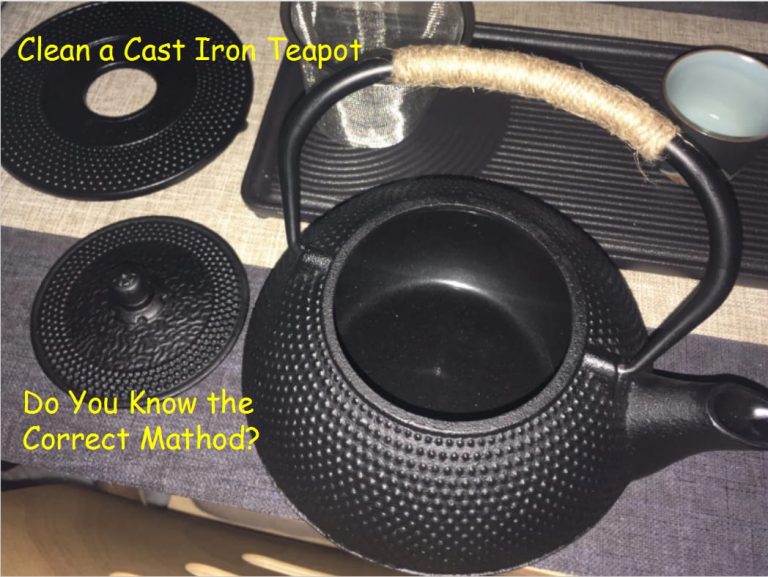
Cleaning cast iron teapot is essential to maintain its longevity, preserve its flavor-enhancing properties, and prevent rust. Here is a more detailed on how to clean a cast iron teapot.
Step 1: Empty the Teapot Immediately After Use
- Why: Leaving tea or water in the teapot for an extended period can lead to staining, mineral buildup, or even rust in the long term.
- How: Once you’ve finished your tea, immediately pour out any remaining tea or water to prevent residue buildup. That is a good way to how to clean rusty cast iron teapot.
Step 2: Rinse the Teapot with Warm Water
- Why: Warm water is effective for removing tea residue without damaging the teapot’s enamel coating.
- How: Rinse the inside of the teapot thoroughly with warm water to remove any remaining tea particles or leaves. Avoid using cold water, as the temperature difference could damage the teapot.
Step 3: Avoid Using Detergents or Harsh Cleaners
- Why: Soap or detergent can damage the internal enamel coating and may leave behind a residue that affects the taste of future brews. Steel brushes or abrasive cleaners may scratch or damage the coating.
- How: Stick to water-only cleaning, and if necessary, use a soft cloth or sponge for any stubborn stains or residue.
Step 4: Gently Wipe the Interior and Exterior Dry
- Why: Any moisture left in or on the teapot can cause rust to form, especially on uncoated areas such as the lid’s rim or the teapot spout.
- How: Use a clean, soft, dry cloth to carefully wipe both the inside and outside of the teapot. Ensure no water is left in hidden areas like the spout or under the lid.
Step 5: Air Dry with the Lid Off
- Why: Even after wiping, there might still be some residual moisture in the teapot. Allowing it to air dry ensures that all areas are completely dry before storage, preventing rust.
- How: Leave the teapot with the lid off in a well-ventilated area until it is fully dry.
Step 6: Clean the Exterior Gently
- Why: The outside of the teapot can accumulate dust or fingerprints, especially if it has a decorative surface.
- How: Use a soft, dry cloth to clean the exterior. Avoid using harsh or abrasive materials to protect any decorative finishes or coatings on the outside.
How to Care For A Cast Iron Teapots?
It is not enough merely to understand how to clean a cast iron teapot. The following is a detailed introduction of how to care for a cast iron teapot:
How to Prevent Rust from Your Cast Iron Teapots?
Tip 1: Empty the Teapot After Each Use
- Why: Residual tea or water left inside the teapot can cause rust over time, especially in areas where the enamel coating may be thinner or absent.
- How to Care: Immediately pour out any remaining tea or water after each use to prevent moisture buildup, which is the primary cause of rust.
Tip 2: Dry the Teapot Thoroughly
- Why: Moisture is the leading factor in the formation of rust on cast iron. Even small amounts of water can lead to rusting.
- How to Care: After rinsing, use a soft cloth to thoroughly dry both the interior and exterior of the teapot. Make sure to air dry with the lid off to allow any remaining moisture to evaporate.
Tip 3: Avoid Scratches on the Exterior
- Why: Many cast iron teapots have an exterior coating or enamel that protects the surface from rust. Scratches can expose the raw iron beneath, making it susceptible to rust.
- How to care: Be gentle when handling the teapot, and avoid using metal utensils or abrasive cleaning tools on the outside.
Oil the Teapot Occasionally (Optional)
- Why: For uncoated cast iron teapots or areas where rust tends to form, a light layer of food-grade oil can act as a protective barrier against moisture.
- How to care: After thoroughly drying, apply a small amount of oil to the teapot’s interior or exposed iron areas, wiping away any excess with a clean cloth.
How to Regularly Clean Your Your Cast Iron Teapots?
Regarding the question of how to care for a cast iron teapot, another essential thing you should do is to regularly clean your cast iron teapot. Here is how you can do it:
Rinse with Warm Water After Each Use
- Why: Tea leaves and tannins can leave residue that builds up over time, affecting the taste of future brews.
- How to care: Rinse the teapot with warm water immediately after use, avoiding detergents that can damage the enamel or leave behind a soapy taste.
Use Gentle Cleaners for Stubborn Stains
- Why: Over time, tea stains or mineral buildup (especially from hard water) can accumulate, affecting the appearance and performance of the teapot.
- How to care: For tough stains, use mild, natural cleaning solutions like a mix of white vinegar and warm water or lemon juice. Scrub gently with a soft cloth or sponge to avoid damaging the enamel.
Avoid Using Detergents or Harsh Brushes
- Why: Harsh soaps can strip the teapot’s protective enamel coating, and metal brushes can scratch the surface, leading to rust.
- How to care: Stick to warm water and a soft cloth or sponge for daily cleaning, and use natural cleaners only when necessary.
How to Store Your Cast Iron Teapots?
For people wondering how to care for cast iron teapot if they do not intend to use it for a long period of time, here is three tips you can follow:
Store in a Dry, Well-Ventilated Area
- Why: Humid or damp environments can lead to rust, especially if the teapot is stored with moisture still inside. Proper storage is essential to prevent rust from developing during periods of non-use.
- How to care: Store your teapot in a cool, dry place. Avoid locations near sinks, stoves, or humid areas. If possible, store with the lid off or slightly ajar to allow air circulation.
Use a Protective Cover
- Why: A cover can protect the teapot from dust and moisture, which can accumulate in storage over time.
- How to care: Use a clean, dry cloth to cover the teapot or store it in a dust-free cabinet when not in use.
Check the Teapot Regularly for Moisture or Rust
- Why: Rust can form even in storage, especially in humid environments. Regularly checking the teapot ensures that any early signs of rust can be dealt with immediately.
- How to care: Inspect the teapot periodically and, if you notice any moisture, dry it thoroughly before continuing to store it.
Conclusion
The cast iron teapot is not only a practical tea brewing tool, but also a work of art to enhance the tea drinking experience. Excellent performance makes it a yes answer to is cast iron teapot safe?, are cast iron teapots better?, are cast iron teapots healthy?, and why use a cast iron teapot. It is important to note that every user should know how to clean cast iron teapot, how to brew tea in a cast iron teapot, how to care for cast iron teapot, how to heat a cast iron teapot, and how to remove rust from cast iron teapot. As long as you follow the correct use method and maintenance skills, cast iron teapots can not only let you enjoy the perfect tea aroma, but also extend its service life.
Frequently Asked Questions of How to Use Cast Iron Teapots
Generally, it is not recommended to heat a regular cast iron teapot directly on a stove. If you need to boil water, it’s better to use a cast iron kettle specifically designed for heating.
Before using it for the first time, rinse your cast iron teapot with warm water and dry it thoroughly. Place loose tea or tea bags in a separate tea infuser (many cast iron teapots come with one). Boil water separately–never on the stove with the teapot–and pour it into the teapot over the tea leaves.
Avoid soap or harsh detergents. After each use, rinse the teapot with warm water. Use a soft cloth or sponge if needed, but avoid scrubbing to protect the enamel interior. Dry the teapot thoroughly with a soft towel and let it air-dry completely to prevent rust. Never leave water or tea inside for extended periods, as it may cause rust.
Preheat the teapot by pouring warm water inside and letting it sit for a minute. Discard the water, place loose tea leaves or a tea bag in the infuser, and set it inside the teapot. Boil water separately and pour it over the tea. Cover the teapot with the lid and steep for 3-5 minutes, adjusting based on tea type. Once ready, serve directly from the teapot. Avoid leaving brewed tea inside for too long to preserve the teapot’s enamel and maintain the tea’s flavor profile.

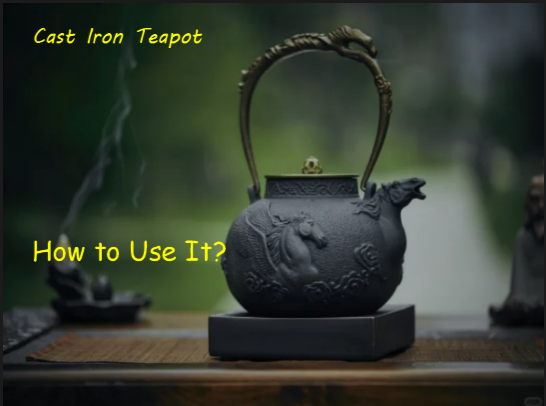
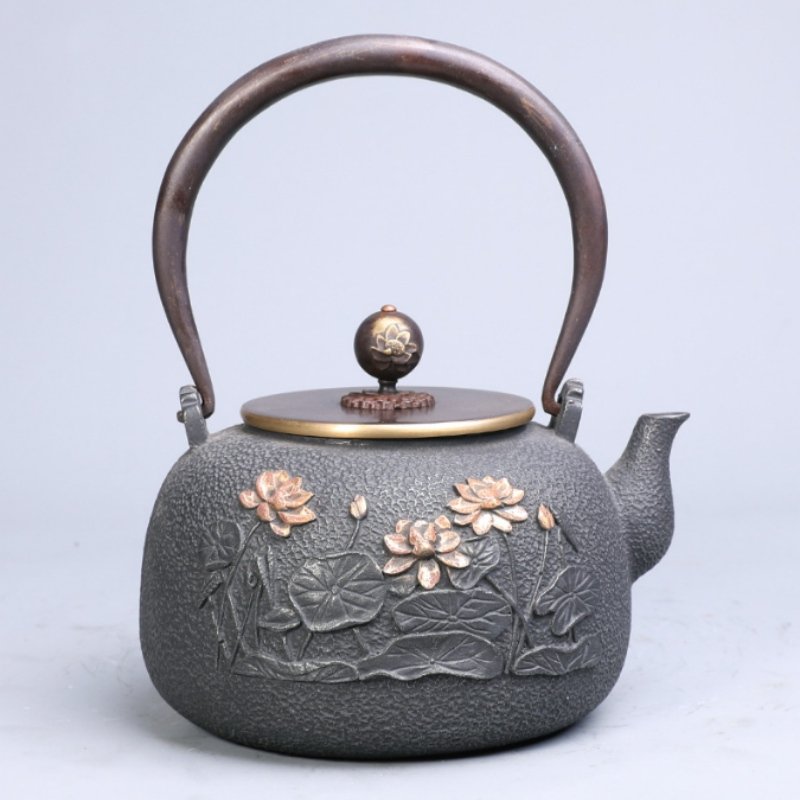
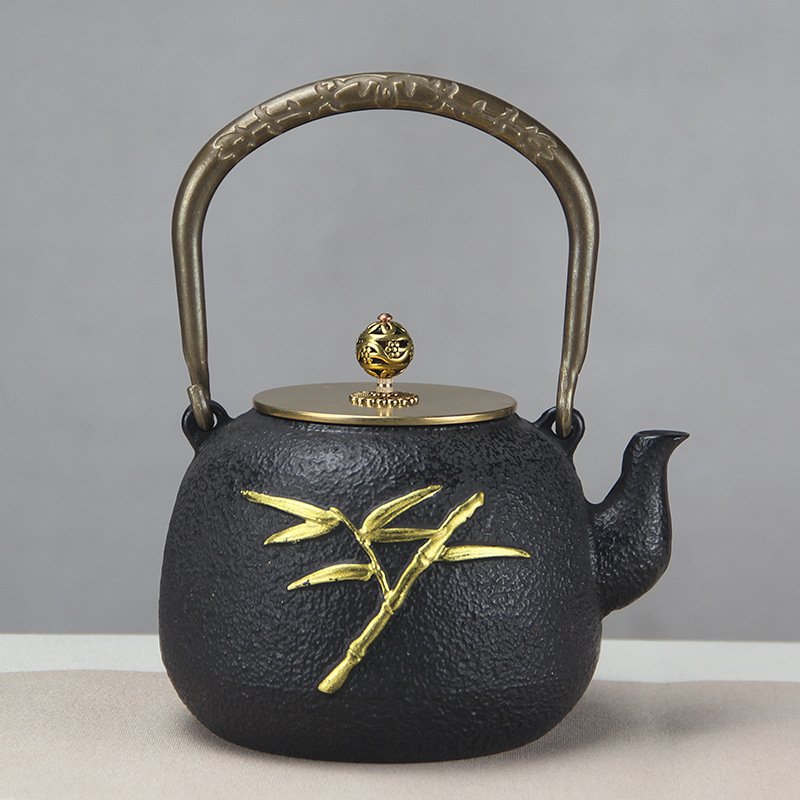

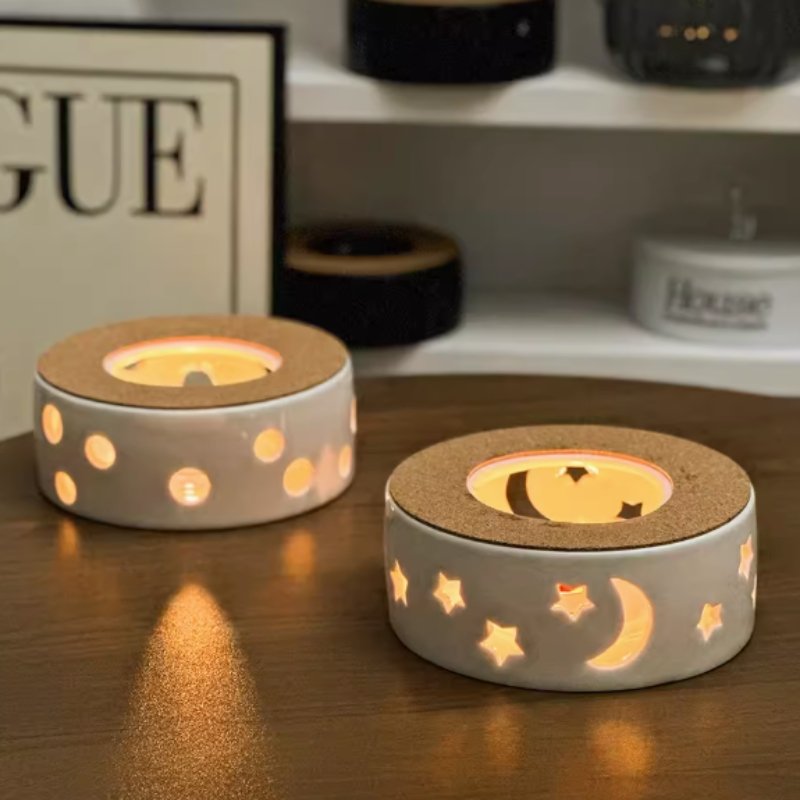
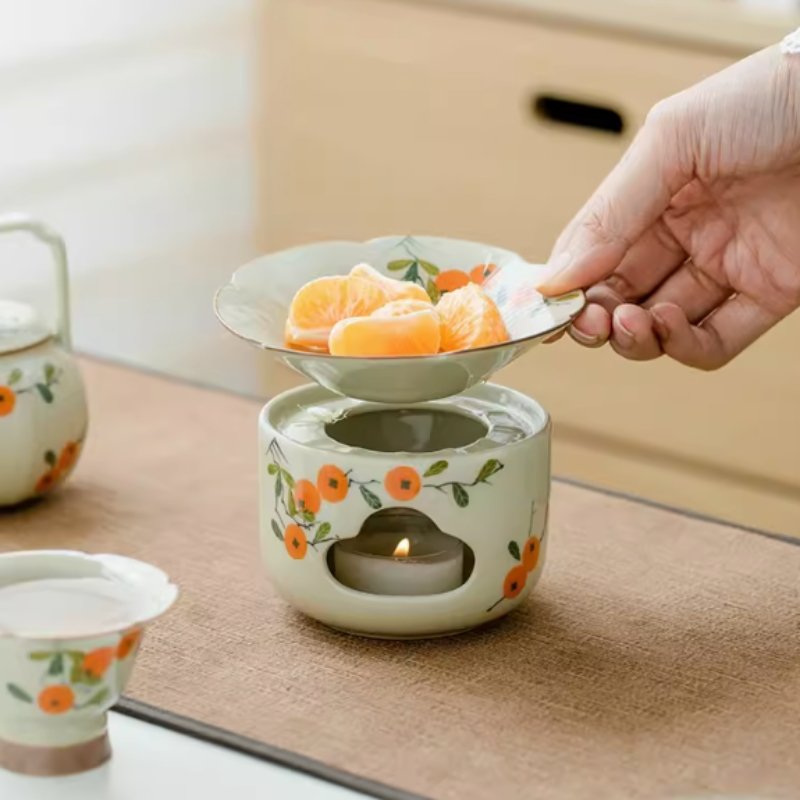
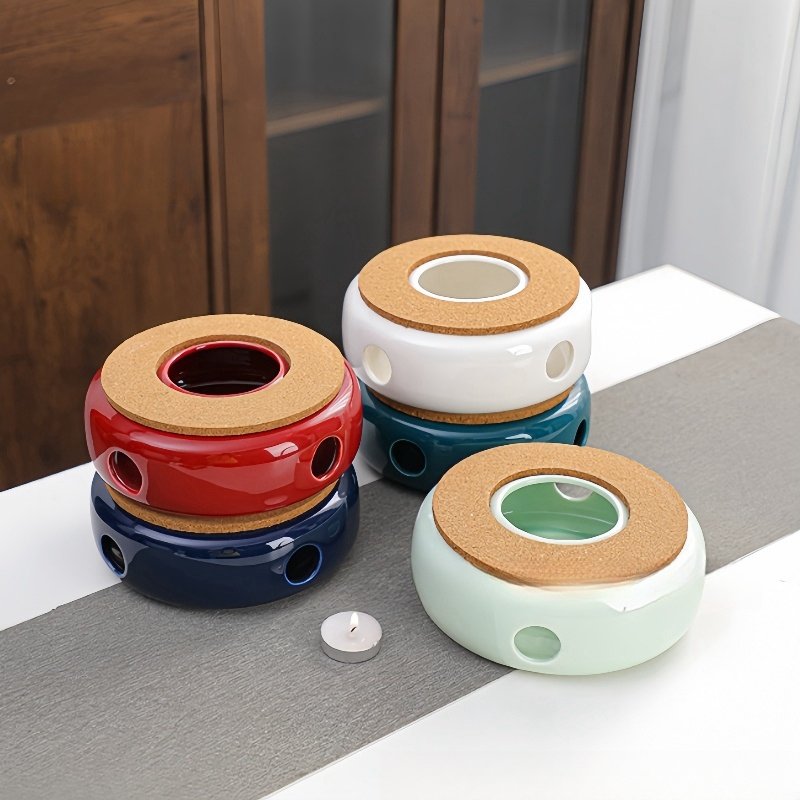


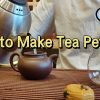


Leave a reply